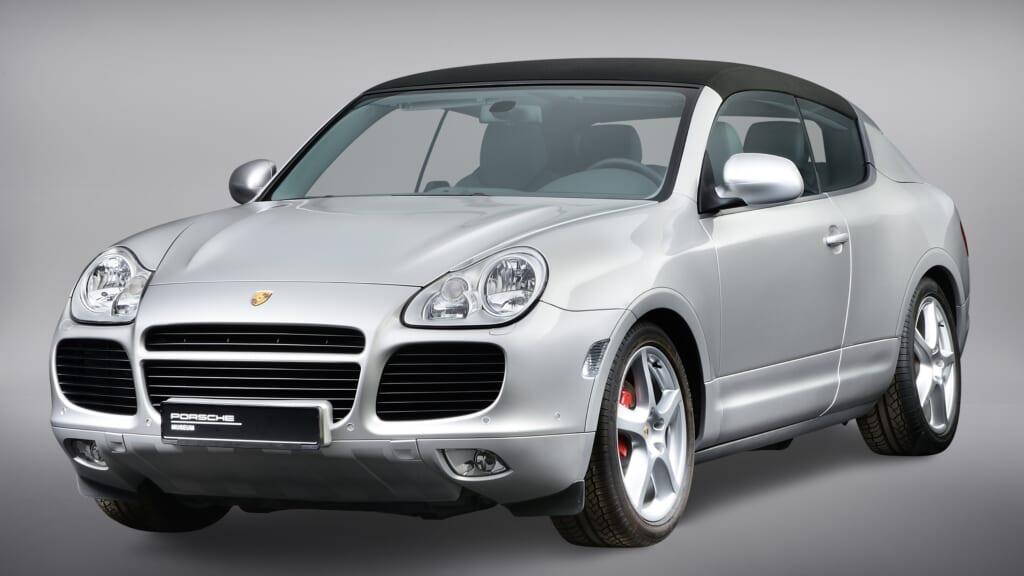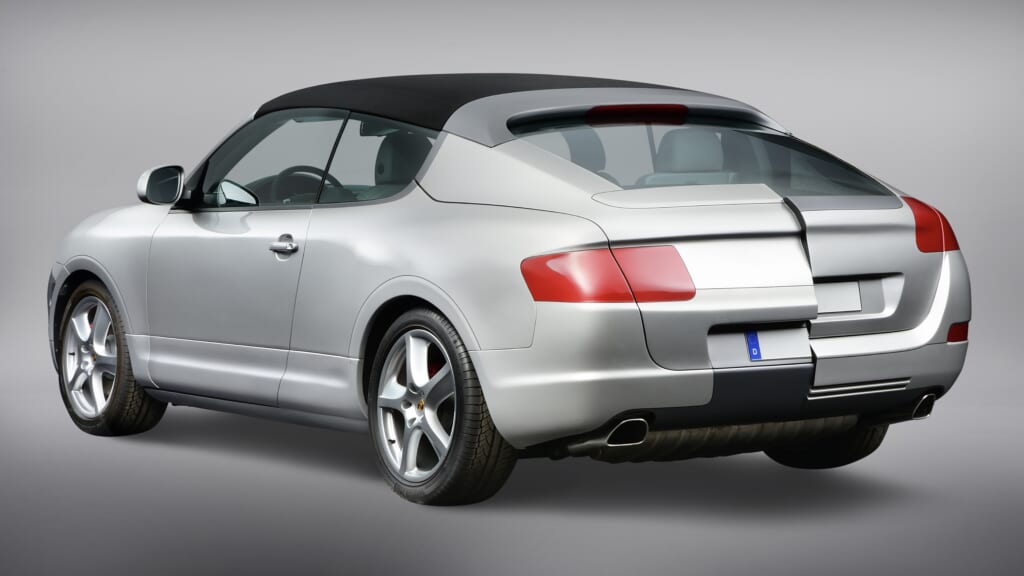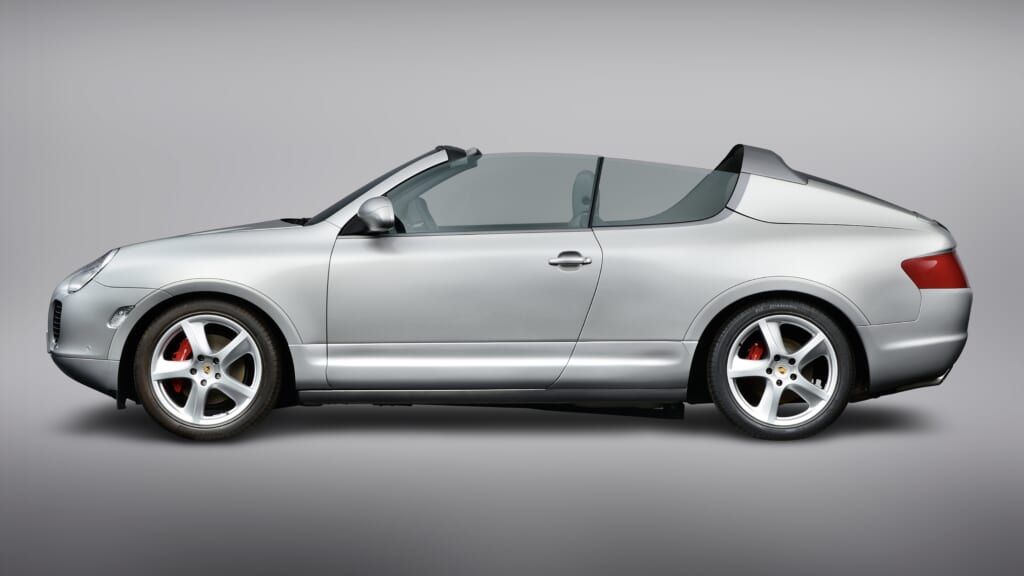Porsche Unveils One-Of-A-Kind Cayenne Convertible For SUV’s 20th Anniversary
Porsche’s top-selling SUV goes topless.

Porsche was among the first automakers to enter the hi-po luxury SUV segment with the 2002 launch of the Cayenne, a model that would go on to lead the German marque’s global sales figures many years over, only to be usurped in popularity by the smaller Macan SUV. But what if the Cayenne was a convertible?

On the Cayenne’s 20th anniversary, Porsche has revealed that designers did kick that idea around. They even built a Package Function Model (PFM) with the top chopped-off. It’s not a fully-fledged prototype, as its body wasn’t sufficiently stiffened for testing, but the physical one-off was used to assess four criteria:
Per Porsche,
Is the seating comfortable throughout the vehicle when the roof tapers in a more coupé-like way towards the rear and when the windscreen and A-pillars are shortened? How practical is the Cayenne as a two-door model with doors which are 20 cm longer? Is it possible to accommodate an elegant, high-quality soft top that can also be folded quickly? And how should the rear end be designed?

None of those questions were completely answered. Porsche did simulate a convertible mechanism that would bring the roof over a fixed rollbar and into the luggage compartment lid, much like the top of the 991-generation 911 Targa that would debut a decade later. The Cayenne PFM’s “coupe-like” roof taper would also be spiritually realized with the launch of the Cayenne Coupe in 2019.
But perhaps the biggest challenge on the Cayenne convertible’s untaken path to production are its looks, which are ungraceful at best and god-awful at worst. Even current Porsche Design Chief Michael Mauer admits that the shape is “very strange.”

“An SUV as a convertible is a challenge both aesthetically and formally,” Mauer said in a statement. “An SUV always has a large and heavy body. You combine this with a small top half and then cut off the roof – you get very strange shapes emerging from that.”
